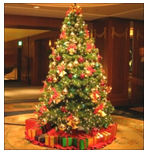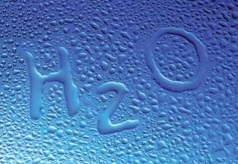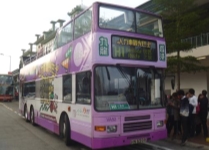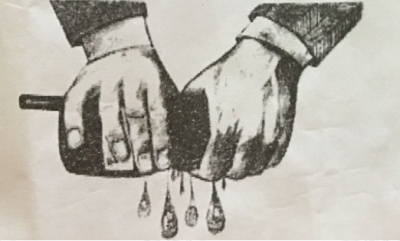��Ŀ����
����Ŀ���Ķ�����������ģ��ش����и���
�ŋָ��ؼ�
���������
��̫���У���ï����Ϊ�������£����ڶ�ɽ��ԵϪ���룬����������ʯ���ԣ�ï��������˵�����������飬������ģ�Ī�ܱ棬ï����֮��������ï��Ի���������鼸�Σ���ï��Ի������֮δ���ߣ���ʮ�����飻����ʮ�����飬���Ѷ���֮�ӡ�������Ц����ï�ȱ���ʯ���£��������룬;����������һ���ᣬ���������������Ի�������飿��Ի������ʷҲ��������һ�ң���������������������?������Ի�������־Ҳ��������һ���ң���Կ���̣��ж���Ȯ��֮����������Ի���ŋָ�������������Ի�����εأ���Ի��������ȫ�桢���������顢�ؼ�����ָ��ȮԻ�����˳���Ҳ���ش˶�ǧ���ӡ���������ï���룬�������飬���غ���ǰ����������£�����δ�š��硶���ء������𡷡���ɽ������ء�����軡���������飬������ɡ�ï��ˬȻ��ʧ�������˳��ƹ���֮���ʽ���������С�ï��Ϊͣ����������ν����Ի�������������ٷã��ݹ�Ⱥ�顣������Ц������ï�ȳ�����������ʯ��Ȼ�Աա�ï�Ȼ���֮�������Ӳ����ܣ���ʯ������ʯ��̦��ϣ�����϶��ï�ȳ�Ȼ���ӣ���ʯ�ٰ���ȥ��
���Ϸ���ʷ�����������㡣������ȫ�飬������ֻ�֡���������ǰ���������мǡ���ǰ�ӷ��ˣ�������������������������һ���롣������ʮ����ǧ����һ������֪���С����������ʯ������ë������ͬ���ɡ����������ˣ�·�Բ������������ڼ䣬����Ω�ú�һ���ţ���������������ʮ���������л��С�
��ע������ï�ȣ���������ï�ȡ�������ѧ�ҡ�
��1�������о����мӵ����Ľ��ͣ�����ȷ��һ����
A��������ï���� �ࣺ���������ӡ�
B��ï��Ϊͣ�������� ���ޣ������졣
C�����������ٷ� ������Я����ʳ��
D��������ʮ�� �ˣ�����
��2�����и�������У��ӵ�ʵ�������÷�����ͬ��һ����
A�� B��
B�� 
C��![]() D��
D�� ![]()
��3�����ж�ԭ���й����ݵĸ���������������ȷ��һ����
A������ï�ȵ�������ǰ��������Ц��������ï������������ٷ���������ʱ������
��Ц����������Ц��֮�£����˿��ݡ����ص������֮������
B�����Ľ�һ����������ɫ�ʵĹ��£���ʾ��ɽ����ɽ�������������ĵ��������һ�
Դ�ǡ�����鹹��Դ�ɾ�����������룺����������ͬ��֮�
C���������¼�������дϸ�壬��β�鼰�����Ϸ���ʷ����ּ��������������������壬
���µ伮��ٵ���Ϊ�������������������ϵ�������
D���������������Ⱦ����ī����˵���ˣ�����������ʯ��������д���أ����г���
���ش˶�ǧ����������β�����ĵ���ʽ������ּ��������˼��
��4�������л��ߵľ�������ִ������7�֣�
��1��ï��ˬȻ��ʧ�������˳��ƹ���֮���ʽ���������С���3�֣�
���ģ�_______________________________________________________________
_______________________________________________________________________
��2����֪���С������������4�֣�
���ģ�_______________________________________________________________
_______________________________________________________________________
��5������/����������ĶζϾ䡣��3�֣�
�����߽�Ի�����Ѱ������ӳ�����ΪδҲԻ�������߷������ĽԷ���ʵ֪����֮����Ҳ��ʯ��֮��н֮�¶������ϻ�δ��ȼ��ν֮������֮�ƺ������
��ѡ�Լ��꡶�ΰ��ߡ���
���𰸡�
��1��A
��2��B
��3��C
��4����1����ï�ȸе�ãȻ��ʧ�䡣���������ó��Ʋ˹�Ʒ�����ԣ�ʳ��������ྻ�����˼���ӵ�еġ���2�����������£���֪���Ҽ�ʶdzª���������������������������������IJ���֪���ļ���ת����
��5�������߽�Ի//�����Ѱ�������/������ΪδҲ/Ի��������/��������/�Է���ʵ֪����֮����Ҳ/����֮��н֮�¶�������/��δ��ȼ/��ν֮��/����֮��//�������
��������
16�����������A��Ĵ������ڣ��������������Ȼ��ȷ��������������˼����������Ϊ��������������ֻ���DZ�ʾһ��̬�ȣ�Ӧ��Ϊ�������أ�����ˣ���������ʵ�ʵĿ���һֱ���������Ķ��ص㿼�˵����ݣ�����ʱӦ�����ᄈ��ע��ͨ���֡�������á��Ž����塢һ�ʶ���ȡ�������ô��뷨��������ѡ����ʹ����ı��ᄈ��������ͬ�������ᄈ�Ƿ��Ǻϡ�
17��B�������������һ�������ʣ��൱�������ڡ�����������ڶ��������ʣ���������֮�⡣A���������������ʣ��൱����ͬ����C����������������ʣ�ͬ����Ķ�������������������ֶ��D����������������ʣ������������ʻ��Զ������һ������������ʵ���Ŀ����ϰ����ʱҪע��������ʵ�������÷����ص���俼�ٹ涨��18��������ʵ��÷������壬��Ҫ�ص����α��еľ������䡣����ʱ������ȷ�α�����ʵĺ��壬Ȼ��Ը�ѡ�����������Ӽӵ���ʵ�������÷�������ԱȽϡ�
18��C����ּ���������������������������ԭ�IJ�û��������������˼������֮����������ʼ�ʷ������֮�£���Ϊ��˵����������֮�鱣��������û��ֻ����©��
19���ڣ�1�������ˬȻ������ãȻ�������֮�⣬����ʧ�������Լ��е�ʧ����������֮�������������������ʽ������������ྻ�����ڣ�2�������������������������С��������ʶdzª������������������ĵ�ʳ��ԡ�ׯ������ңƪ���������Dz������������̣ܶ���֪�����^�ڵ��ֻ������Է����������Ŀ��ıؿ������ݣ�����ע��ֱ�룬�Ѿ����е�ÿһ���ֶ�Ҫ�䵽ʵ�������ܷ�������ʵ�ɾ����ʡ�Ե����ݸ��������IJ��䣬�����������������֡�ƽʱѵ��ʱע���Լ�ȷ�����ӵĸ��ֵ㣬����ʱ��֤���ֵ����ʵ����Ҫע�ⷭ����֮��һ��Ҫע��Ծ��ӽ��б�Ҫ��������ʹ����ͨ˳��
20����Ի����������Ҳ�����������ǶϾ�ı�־�Դ�������������Ĵ������������������Ӧ�Ͼ䣻������ȼ����������֮���ޱ���Ҳ�������Ӧ�Ͼ䣻������֮������������������������ν֮��Ӧ�Ͼ䡣���ԶϾ����Ŀ������ע��һЩ�����ı�־�Ե���ʣ�ע����Ӵ���ṹ�ĶԳƣ���Ҫע��һ���¼���Ҫǿ�жϿ�����Ȼ���Ӿͻ�֧�����飬�෴�����¼������ٶ̣�ҲҪ�Ͽ��������ԶϾ��ǰ���Ǵ�ͨ���⣬Ȼ�����þ��е���������������ְ����������ʡ����ӽṹ�Լ�����ж��ʵı������ȶϾ䡣
�ο����ģ�
����̫�����꣬�Ż����ν������£��ڶ�ɽ������˳��СϪ������ɽ����һ����������
������ʯ���ϣ��Ż�ͬ��̸�֡��Ż�����ͷ���ŵ��飬����д�Ķ�������ģ����ܱ�ʶ���Ż��е��ܲ��졣�������Ż�˵���������˶����飿���Ż�˵������û�ж������鶼�ǽ���ʮ���ڵ����飬����Ƕ�ʮ����ǰ���飬�����ȫ�������ˡ�������Ц�ţ������Ż����ֱ��ߵ�ʯ���£���Ȼ����һ���ſ����߽�ʯ�ڣ�·���ȽϿ�������һ�����ŵ����ᣬ���װ��һ����顣�Ż�������˵��������Щʲô�飿������˵�����������ϵ���ʷ�顣���ֵ���һ�����䣬�����ղص��鼮���ӷḻ���Ż����ʣ�������ص�ʲô�飿�����˻ش��������������ʷ�顣�����ֵ���һ���ܷ�ķ��䣬�ü�̵������ţ�����ֻ��������ǰ������ӡ�д�ӡ��д�����ŋָ������ĸ��֡��Ż������˵���������ʲô�ط���������˵�������������ȫ�桢���������顢�ؼ���������ָ����ֻ��˵��������dz�����������������ǧ���ˡ������˿��Ź���Ҿ���Ż����ݣ��Ż����������ղص��飬ȫ�����غ���ǰ�Լ�����������£��ܶ����δ�š����硶���ء������𡷡���ɽ������ء�����軡���������鼮��Ҳȫ��������Ż��е�ãȻʧ�䡣���������ó��Ʋ˹�Ʒ�����ԣ�ʳ��������ྻ�����˼���ӵ�еġ��Ż����������ͣ����������ų�����������˵�����Ժ��Ҵ�����ʳ�����ݷã��ۿ�ȫ���鼮��������Ц���������Ż����������߳�����ʯ�ź�Ȼ�Լ��ر��ˡ��Ż���ͷһ����ֻ���Ӳ����ܣ�������������ʯͷ�ϣ�ʯ����̦Ҳ��һ���飬һ���϶��û�С��Ż�������ע���ţ�����ʯ��������ݲ��뿪��
��ʼ���յ������Ӱټҵ��鼮�����������һ�������ȼ�ա�����ȴ�б����������鼮����һ���ֶ�û
��©�����ݵ�����֮ǰ������������֮ʱҲ�м��ء�����̫�ڣ�����һֻ���ӣ��������˶��������������кܶ������ijǹ������Ƕ���ţë����������һ�ź��롣���鼴ʹ������ʮ����Ҳֻ����ǧ���֮һ�������������£���֪���Ҽ�ʶdzª���������������������������������IJ���֪���ļ���ת����ʯ������ë�����������ľ���ͬС��һ�������ȥ�������ˣ�����ȴ����·���ܵ����ͷ�����¾���֮�䣬ֻ�з賤�����������Ұû��ź�����һ���ž��Ѿ��ǿ��������ɼ��ˡ���������������ʮ���꣬Ҳ�����м�Ὺ�š�

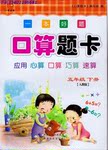 һ����������ϵ�д�
һ����������ϵ�д�
